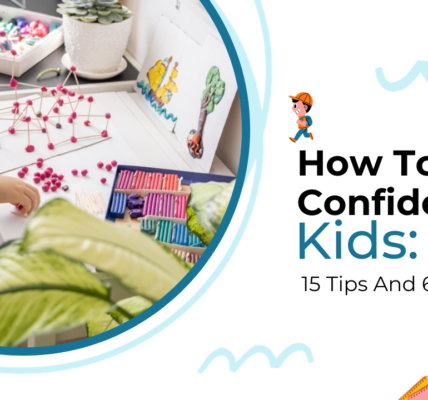20 Energizing Exercises for Kids: Fun Ways to Stay Active at Home
Engaging children in physical activities at home is vital for their overall well-being. Discovering ways and different exercises for kids to keep them active indoors through playful exercises not only promotes physical fitness but also enhances their mood and cognitive development.
Importance of Physical Activity for Children
Encouraging physical activity in children offers numerous benefits beyond just fitness. It aids in maintaining a healthy weight, boosts mood, enhances bone health, promotes better sleep, and even supports cognitive development.
Benefits of At-Home Exercises for Kids
- Promotes Creativity: Designing DIY games encourages creativity and problem-solving skills in children.
- Family Bonding: Participating in these activities together strengthens family bonds and creates lasting memories.
- Adaptable to Space: These exercises are adaptable to small spaces, making them perfect for indoor activities.
Here 20 physical activities or exercises for kids have been mentioned-
Exercise 1: Jumping Jacks
Instructions:
- Start with feet together and arms at the sides.
- Jump while spreading legs shoulder-width apart and raising arms overhead.
- Return to the starting position and repeat.
Jumping jacks are a great way to get the heart pumping and improve cardiovascular health.
Exercise 2: Animal Walks
Instructions:
- Encourage kids to imitate various animal movements: bear crawl, crab walk, frog jumps, etc.
- Each movement helps develop different muscle groups and improves coordination.
Exercise 3: Balloon Volleyball
Instructions:
- Inflate a balloon and set up a ‘net’ (could be a rope or drawn line).
- Kids volley the balloon back and forth, promoting hand-eye coordination and teamwork.
Exercise 4: Dance Party
Instructions:
- Crank up some upbeat music and let kids dance freely.
- Dancing not only burns energy but also improves flexibility and motor skills.
Exercise 5: Hula Hooping
Instructions:
- Provide a hula hoop and encourage kids to keep it spinning around their waist.
- This activity enhances core strength and coordination.
Exercise 6: Obstacle Course
Instructions:
- Create an indoor obstacle course using cushions, chairs, and other household items.
- Children navigate through the course, enhancing agility and problem-solving skills.
Exercise 7: Stretching and Yoga Poses
Instructions:
- Teach kids simple stretching exercises and basic yoga poses.
- These activities improve flexibility, balance, and focus.
Exercise 8: Indoor Relay Races
Instructions:
- Set up relay stations with different tasks (jumping jacks, hopping, balancing).
- Kids take turns completing each task, promoting teamwork and physical activity.
Exercise 9: Simon Says
Instructions:
- Play the classic game with physical activities as commands (Simon says touch your toes, jump, etc.).
- This game encourages listening skills while keeping kids active.
Exercise 10: Pillow Fight
Instructions:
- Engage in a safe and controlled pillow fight.
- This activity provides cardiovascular exercise while being incredibly fun.
Exercise 11: Shadow Tag
Instructions:
- Play tag, but instead of touching, players step on each other’s shadows.
- Shadow tag encourages quick movements and agility.
Exercise 12: Indoor Bowling
Instructions:
- Create a bowling alley using empty water bottles and a soft ball.
- Kids roll the ball to knock down the ‘pins’, enhancing hand-eye coordination.
Exercise 13: Staircase Dash
Instructions:
- Supervise kids as they run up and down stairs, ensuring safety.
- Staircase dashes boost cardiovascular health and leg strength.
Exercise 14: Wall Sit Challenge
Instructions:
- Encourage kids to sit against a wall with knees bent at a 90-degree angle.
- This exercise strengthens leg muscles and improves endurance.
Exercise 15: Skipping Rope
Instructions:
- Provide a skipping rope and guide kids on basic skipping techniques.
- Skipping ropes offer a full-body workout, enhancing coordination and stamina.
Exercise 16: DIY Indoor Bowling
Instructions:
- Set up a bowling alley using recycled plastic bottles or cardboard tubes as ‘pins.’
- Encourage kids to roll a ball and aim to knock down the pins, improving coordination and focus.
Exercise 17: DIY Mini Golf
Instructions:
- Craft a mini-golf course using household items (cups, cardboard, rulers).
- Kids practice putting and swinging, refining hand-eye coordination and precision.
Exercise 18: Limbo Challenge
Instructions:
- Use a long stick or a skipping rope held by two people at different heights.
- Children bend backward to pass under the stick without touching or falling, improving flexibility and balance.
Exercise 19: Musical Statues
Instructions:
- Play music and have kids dance, freezing when the music stops.
- This game combines movement and focus, improving reaction times and coordination.
Exercise 20: DIY Hopscotch
Instructions:
- Create a hopscotch grid using chalk or tape on the floor.
- Kids hop through the squares, enhancing balance and coordination.
Engaging children in physical activities at home is vital for their overall well-being. Discovering ways to keep them active indoors through playful exercises not only promotes physical fitness but also enhances their mood and cognitive development.
Safety Tips for Kids’ Exercises at Home
- Supervision: Always supervise kids during physical activities to prevent accidents.
- Clear Space: Ensure the exercise area is free from clutter or potential hazards.
- Age-Appropriate Activities: Choose exercises suitable for your child’s age and abilities.
Creating a Routine for Kids’ Exercises
Establishing a routine for kids’ exercises ensures consistency and makes physical activity a regular part of their daily lives. Consistency helps in fostering a habit of staying active, leading to long-term health benefits.
Tips for Encouraging Long-term Fitness Habits
- Lead by Example: Be a role model by participating in physical activities with your kids.
- Make it Fun: Incorporate games, challenges, and variety into exercise routines to keep kids engaged.
- Provide Choices: Allow kids to choose activities they enjoy to maintain their interest.
Role of Technology in Kids’ Exercise
- Digital Resources: Utilize online platforms offering interactive exercise videos or apps designed for kids.
- Screen Time Balance: While technology can aid in fitness, balance screen time with physical activities.
Frequently Asked Questions (FAQs)
Q 1. How much exercise do children need daily?
Ans 1: Children aged 6-17 years should aim for at least 60 minutes of moderate-to-vigorous physical activity daily.
Q 2. Are these exercises suitable for children of all ages?
Ans 2: Most of these exercises can be adapted for different age groups, but adult supervision is essential.
Q 3. How can I motivate my child to exercise at home?
Ans 3: Make exercise fun by incorporating games, music, and involving the whole family in activities.
Q 4. Can these exercises be done in limited indoor space?
Ans 4: Yes, most of these exercises can be adjusted to fit within limited indoor spaces.
Q 5. Are warm-ups and cool-downs necessary for kids?
Ans 5: Yes, ensure kids perform light warm-ups and cool-down stretches to prevent injury and promote flexibility.
Q 6. How important is hydration during exercises for kids?
Ans 6: Hydration is crucial. Encourage kids to drink water before, during, and after physical activities.
Q 7. Should kids exercise if they’re not feeling well?
Ans 7: If a child is unwell or experiencing discomfort, it’s advisable to skip rigorous physical activities and rest.
Q 8. Are these exercises a substitute for outdoor play?
Ans 8: While these exercises provide indoor options, outdoor play offers exposure to fresh air and nature, which are equally important.
Q 9. Can these exercises be modified for children with disabilities?
Ans 9: Yes, these exercises can be adapted to accommodate children with disabilities. Consult a healthcare professional for specific recommendations.
Q 10. How can parents ensure exercise safety at home?
Ans 10: Ensure the exercise area is safe and supervise kids during activities. Choose age-appropriate exercises to prevent accidents.
Conclusion: Active Lifestyle for Kids
Incorporating these exercises into a child’s routine ensures they stay active and healthy while having fun indoors. Whether it’s dancing, playing games, or mimicking animals, these activities promote physical fitness and overall well-being.
For further insights on exercises for kids and physical activity, visit Parentology.co.





